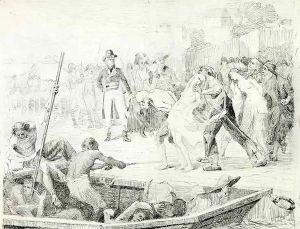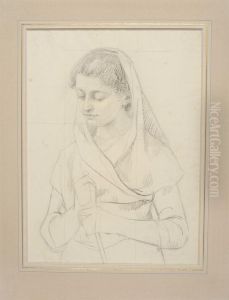Joseph Aubert Paintings
Joseph Jean Aubert, often known simply as Joseph Aubert, was a French painter born on April 1, 1849, in Chalon-sur-Saône, France. Aubert's artistic journey began in his early years, showing a profound interest and natural inclination towards the arts. His education in art took a formal turn when he moved to Paris, where he studied under the tutelage of Alexandre Cabanel, a prominent academic painter of the time. This mentorship under Cabanel at the École des Beaux-Arts in Paris deeply influenced Aubert's technique and thematic choices, rooting his work in the academic tradition that was prevalent in the 19th century.
Aubert's oeuvre is characterized by his meticulous attention to detail, a hallmark of the academic painting style that emphasized beauty, precision, and a polished finish. His subjects often drew from history, mythology, and religion, reflecting the academic art's preoccupation with narrative and allegory. Among his notable works are scenes that depict moments from Christian history and mythology, rendered with a depth of emotion and technical precision.
Throughout his career, Joseph Aubert received considerable recognition for his work. He exhibited at the Paris Salon, an essential venue for artists of the time to showcase their work and gain recognition. Aubert's paintings were well-received, earning him accolades and medals, and enhancing his reputation among his contemporaries. His works were not only celebrated in France but also gained attention internationally, contributing to the broader European art scene of the late 19th and early 20th centuries.
Joseph Aubert's legacy is that of a dedicated academic painter who embodied the values and techniques of his time. His commitment to the academic style, even as the tides of art began to shift towards modernism in the late 19th century, marks him as a significant figure in the history of French art. Aubert's death on February 16, 1924, in Paris, marked the end of a career that had spanned several decades, leaving behind a body of work that continues to be appreciated for its craftsmanship and adherence to the academic tradition.

